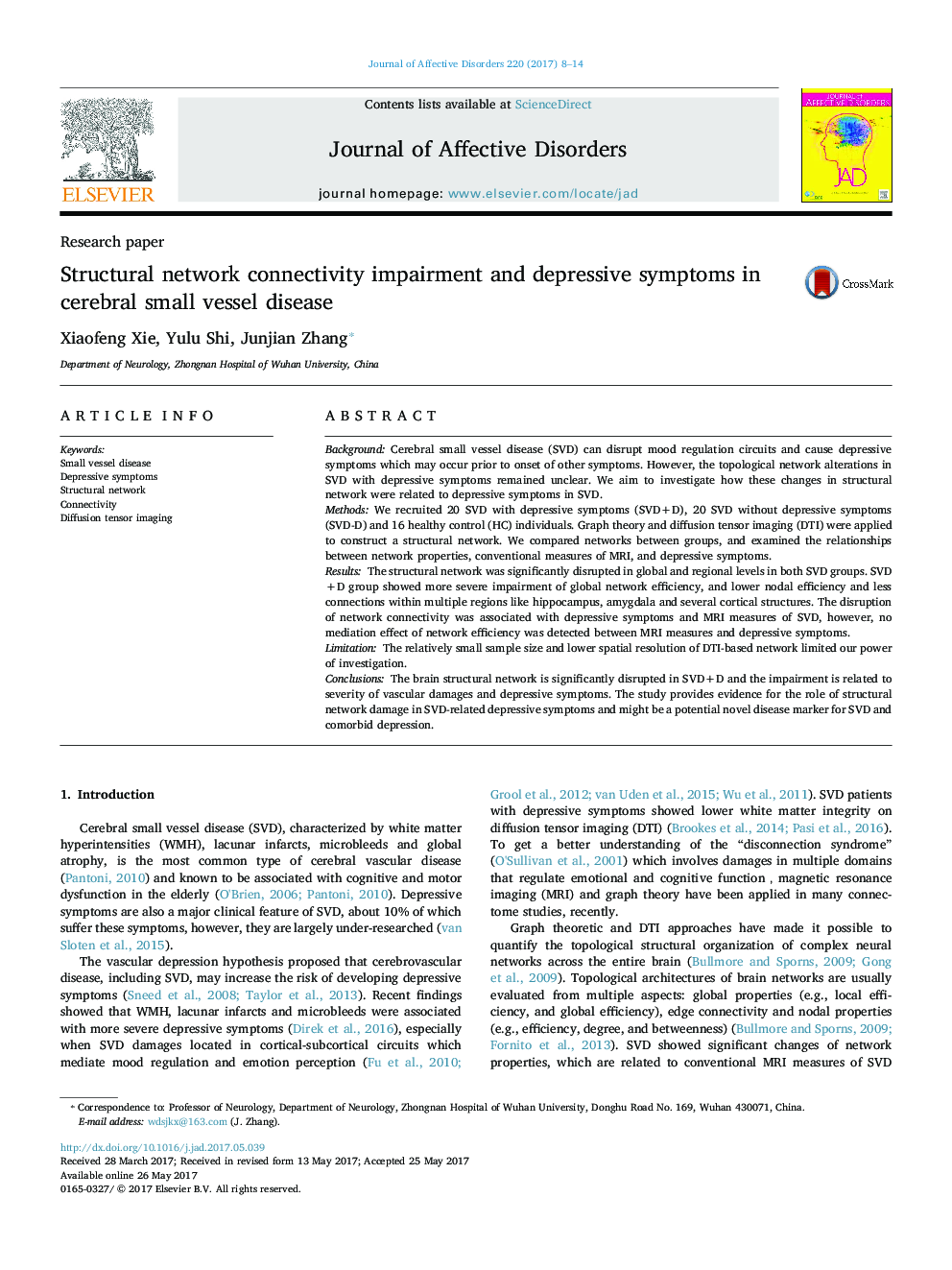| Article ID | Journal | Published Year | Pages | File Type |
|---|---|---|---|---|
| 5722150 | Journal of Affective Disorders | 2017 | 7 Pages |
â¢Graph theoretic and DTI approaches were applied in this network connectivity study of SVD with depressive symptoms (SVD+D).â¢Global and regional network analysis were performed to evaluate the disruption of structural network in SVD+D.â¢The disrupted structural network is found in SVD+D and is related to severity of vascular damages and depressive symptoms.
BackgroundCerebral small vessel disease (SVD) can disrupt mood regulation circuits and cause depressive symptoms which may occur prior to onset of other symptoms. However, the topological network alterations in SVD with depressive symptoms remained unclear. We aim to investigate how these changes in structural network were related to depressive symptoms in SVD.MethodsWe recruited 20 SVD with depressive symptoms (SVD+D), 20 SVD without depressive symptoms (SVD-D) and 16 healthy control (HC) individuals. Graph theory and diffusion tensor imaging (DTI) were applied to construct a structural network. We compared networks between groups, and examined the relationships between network properties, conventional measures of MRI, and depressive symptoms.ResultsThe structural network was significantly disrupted in global and regional levels in both SVD groups. SVD+D group showed more severe impairment of global network efficiency, and lower nodal efficiency and less connections within multiple regions like hippocampus, amygdala and several cortical structures. The disruption of network connectivity was associated with depressive symptoms and MRI measures of SVD, however, no mediation effect of network efficiency was detected between MRI measures and depressive symptoms.LimitationThe relatively small sample size and lower spatial resolution of DTI-based network limited our power of investigation.ConclusionsThe brain structural network is significantly disrupted in SVD+D and the impairment is related to severity of vascular damages and depressive symptoms. The study provides evidence for the role of structural network damage in SVD-related depressive symptoms and might be a potential novel disease marker for SVD and comorbid depression.
